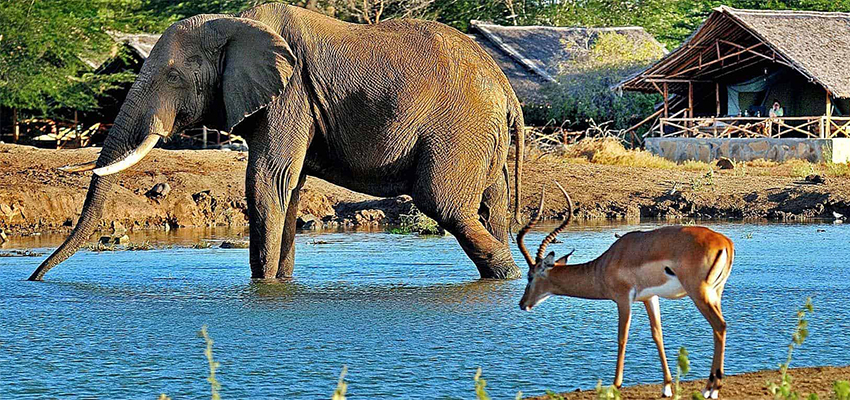Tsavo National Park
The largest park in Kenya, established in April 1948. It was divided into East and West for administrative purposes. The parks are intersected by the Nairobi to Mombasa road and railway.
The park has an interesting and diverse history. The Waliangulu and Kamba tribes previously used the area as a hunting ground. The first European to see Mount Kenya, the Rev. Dr. L. Krapf, journeyed on foot through this area in 1848. During construction of a railway bridge over the Tsavo River in 1898, the famed man-eating lions of Tsavo terrorized the workers, killing 130 people before being killed by Col. J. H. Peterson
- During the First World War, the British built fortresses along the Tsavo River to counter threats from invading German soldiers from Tanganyika (now Tanzania). The European explorer Capt. Lugards passed through the area on his way to Uganda.
Major attractions
Large herds of elephants and other wildlife. Park is catchments for visitors from coast resorts.Yatta plateau, about 300km in length, is one of the world’s longest lava flows. Lugards Falls on the Galana River. Not a true waterfall but a series of rapids. Visitors can walk down to the river to view the rapids.Mudanda Rock is a major outcrop about 1.6km long. There is a dam at the base. Animals can be seen drinking. Visitors can walk along the rock the rock and view wildlife at the base while enjoying a cool breeze. Aruba Dam, built in 1952 across the Voi River, attracts many animals and water birds. Confluence of the rivers Tsavo and Athi to form the Galana River.
Wildlife
Elephant, rhino, buffalo, lion, leopard, crocodile, waterbuck, kudu, gerenuk, zebra and Hunters hartebeest.Activities:Game viewing; walking safaris along the Galana; bird watching.


